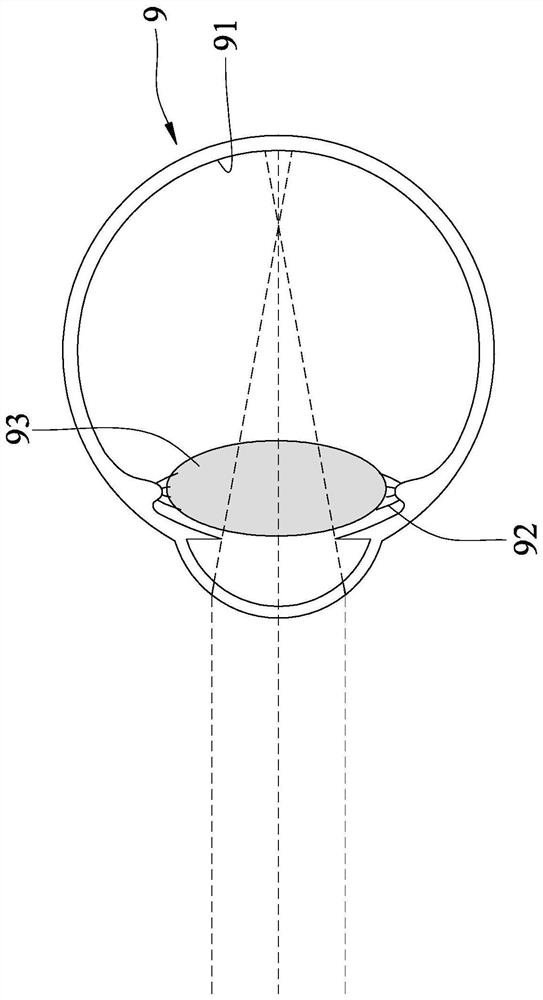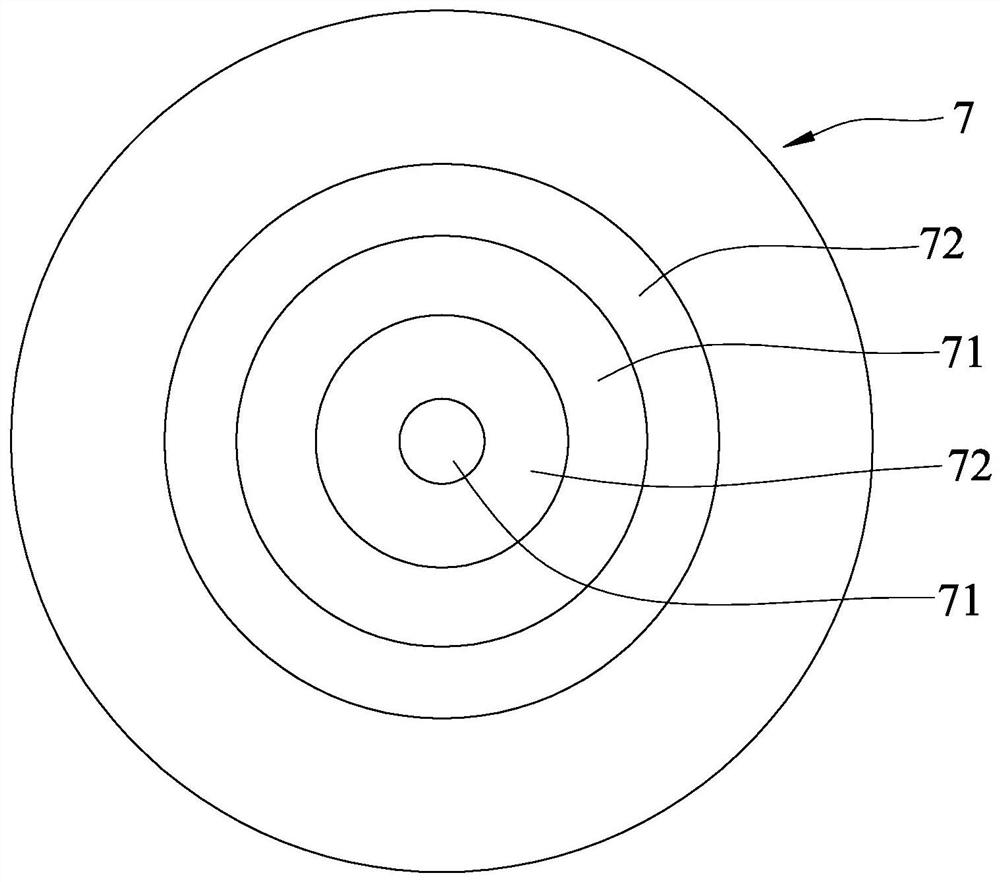Continuous zoom contact lenses
A technology of contact lenses and light mirrors, applied in the field of glasses, can solve problems such as decreased visual contrast, image skipping, dizziness or maladaptation of the wearer, and achieve the effects of correcting ametropia and relieving stress
- Summary
- Abstract
- Description
- Claims
- Application Information
AI Technical Summary
Problems solved by technology
Method used
Image
Examples
Embodiment 1
[0044] refer to Figure 5 , Image 6 and Figure 7 , the continuous zoom contact lens 1 of Example 1 of the present invention is suitable for the design of a stress-relieving lens that relieves the burden of eyes 9 watching at close range. The central optical axis L of the continuous zoom contact lens 1 is the center of a circle and is surrounded by a first optical zone 111, a second optical zone 112, and a peripheral zone 12 with radii of 1.5mm, 3mm, and 7.1mm respectively. . The second optical zone 112 extends outward from the outer edge of the first optical zone 111 , and the peripheral zone 12 extends outward from the outer edge of the second optical zone 112 . The thickness of the central optical axis L of the continuous zoom contact lens 1 is 0.08mm, the base arc radius of curvature of the first optical zone 111 is 8.6mm and the conic constant (K) is 0.3, the starting point of the first optical zone 111 The initial diopter power is -3.0D, the average change rate of t...
Embodiment 2
[0048] refer to Figure 5 , Image 6 and Figure 8 , Embodiment 2 of the present invention is suitable for slowing down children's myopia, which is substantially the same as Embodiment 1, except that the continuous zoom contact lens 1 is formed by polymerization and compression molding of silicon hydrogel (Silicon hydrogel) by UV light irradiation, and the first An optical zone 111, the second optical zone 112 and the peripheral zone 12 take the central optical axis L as the center and are respectively surrounded and defined by radii of 1.0mm, 3.0mm and 7.0mm. The base arc of the first optical zone 111 The radius of curvature is 8.5mm and the conic constant (K) is 0.8, the initial diopter power of the first optical zone 111 is -3.0D, and the average change rate of the diopter power of the first optical zone 111 outward along the radial direction is + 0.125D / mm, the average change rate of the dioptric power of the second optical zone 112 outward along the radial direction is ...
Embodiment 3
[0051] refer to Figure 5 , Image 6 and Figure 9 , embodiment 3 of the present invention is suitable for the continuous zoom contact lens 1 of presbyopia patient, and it is roughly the same as this embodiment 1, and difference is: this continuous zoom contact lens 1 is molded with water gel (Hygrogel) by UV light irradiation polymerization , the first optical zone 111, the second optical zone 112 and the peripheral zone 12 take the central optical axis L as the center and are respectively surrounded and defined by radii of 1.0 mm, 3.0 mm and 7.0 mm. The first optical zone 111 The initial diopter power of the first optical zone 111 is zero, the average change rate of the diopter power of the first optical zone 111 radially outward is +0.25D / mm, and the average change rate of the dioptric power of the second optical zone 112 radially outward The refractive power of the second optical zone 112 to the edge with a radius of 3mm is +2.5D.
[0052]The continuous zoom contact len...
PUM
 Login to View More
Login to View More Abstract
Description
Claims
Application Information
 Login to View More
Login to View More - R&D
- Intellectual Property
- Life Sciences
- Materials
- Tech Scout
- Unparalleled Data Quality
- Higher Quality Content
- 60% Fewer Hallucinations
Browse by: Latest US Patents, China's latest patents, Technical Efficacy Thesaurus, Application Domain, Technology Topic, Popular Technical Reports.
© 2025 PatSnap. All rights reserved.Legal|Privacy policy|Modern Slavery Act Transparency Statement|Sitemap|About US| Contact US: help@patsnap.com



